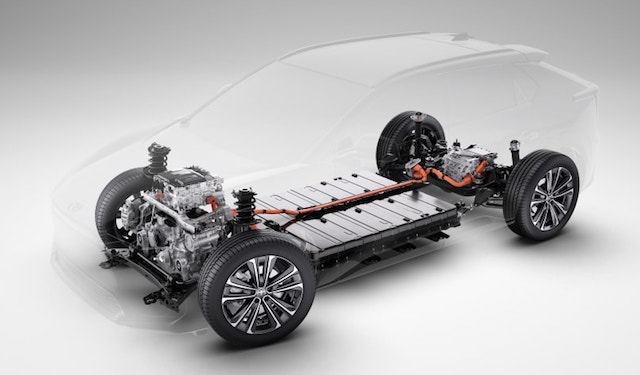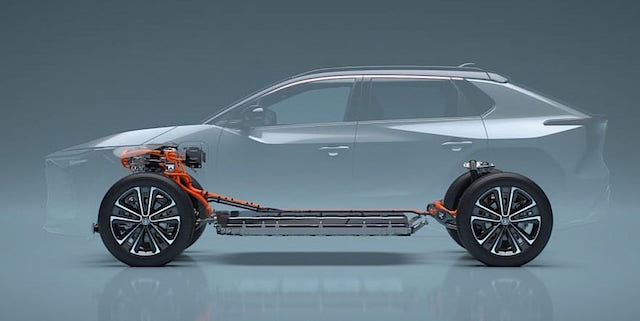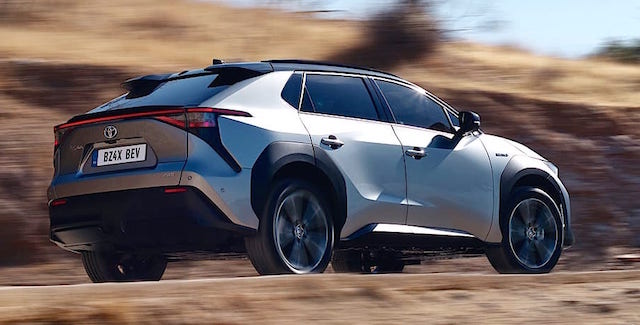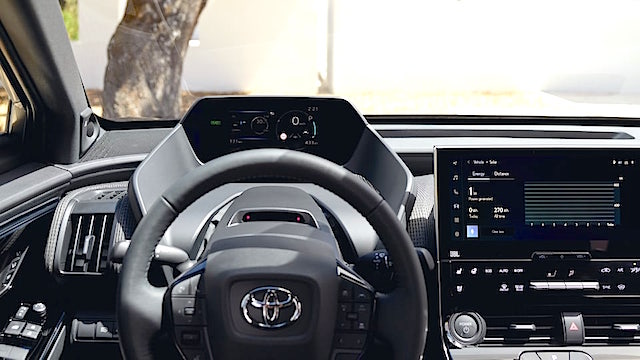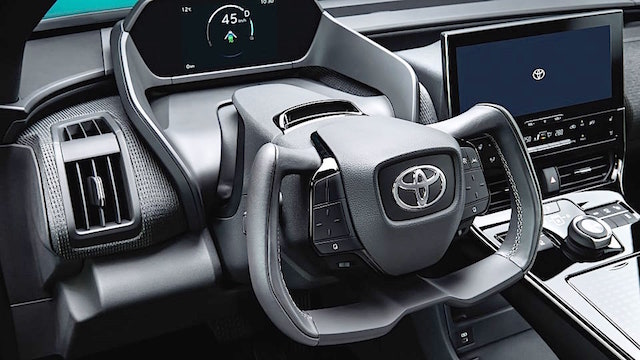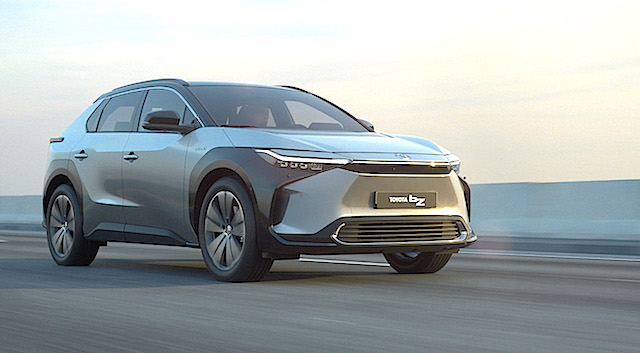
The Toyota bZ4X, the Japanese carmaker’s first battery-electric vehicle (BEV), ushers in the evolutionary next stage of electric automotive power: solid-state batteries (SSB).
The bZ4X SUV won’t have SSB power on board when it lands in New Zealand later next year. Instead it will be powered by a conventional liquid-cooled lithium ion pack.
But it remains a Toyota pioneer of sorts, in that it’s the first in a line of ‘beyond Zero’ (bZ) BEV variants from Toyota that will one day run not on power from the packs now in use, but on the more efficient SSB variety.
The stylised bZ is Toyota’s handle for its BEV sub-brand, of which seven models will be launched worldwide by 2025. The ‘4X’ identifies the upcoming vehicle itself. Trademarks have already been filed for the names ‘bZ1’ to ‘bZ5’ and ‘bZ1X’ to ‘bZ5X’.
At last count Toyota had registered more than 1000 patents for SSBs. It has already shown a prototype BEV running on SSBs; and it plans to be the first company to sell a BEV equipped with an SSB.
Toyota last year established Prime Planet Energy & Solutions, a multi-billion dollar joint venture with Panasonic to develop vehicle batteries, focusing on SSBs for both BEVs and hybrids like the Prius.
Of the companies racing to develop next-generation SSBs, Toyota holds the highest number of international patents. SSB rivals include California’s QuantumScape Corp., Colorado’s SolidPower, Massachusetts’ SolidEnergy Systems, a spin-off company from the Massachusetts Institute of Technology, Massachusetts’ start-up Ionic Materials, and South Korea’s smartphone maker Samsung. Chinese companies are in the thick of things, too.
- QuantumScape Corp. is backed by the Volkswagen Group, Microsoft’s Bill Gates, and China’s SAIC Motors.
- Ford and BMW have invested NZ$180 million into SolidPower.
- Hyundai is putting NZ$140m into SolidEnergy Systems.
- Ionic Materials has support from the Renault-Nissan-Mitsubishi Alliance.
- Samsung, second to Toyota with the number of SSB patents, has already unveiled an SSB capable of powering a BEV for up to 800km.
Unlike lead-acid and nickel-metal hydride batteries, rechargeable lithium-ion batteries are built with a liquid electrolyte to manage the flow of energy between the negatively charged cathode and positive anode.
In electric cars, discharging the battery generates heat. The more rapidly a battery discharges, the more heat it generates. The liquid electrolyte needs constant cooling.
One method is the use of cooling fins, which transfer heat from the battery pack to the fin through conduction, and from the fin to the air through convection. But the extra weight fins add to the pack outweighs cooling benefits.
Another is air cooling. It uses convection to transfer heat away from the battery pack. It is simple and easy, but not very efficient, particularly in hot climates.
The most efficient method is the use of liquid coolants. They deliver the best performance for keeping a battery pack in the correct temperature range. The Nissan Leaf used liquids. The Toyota bZ4X uses water-cooling technology.
An SSB is a step forward from liquid lithium ion packs. It instead uses a solid electrolyte that can be composed of any number of everyday materials, like ceramics, glass, sulfites, or solid polymers. SSBs don’t need cooling.
The Ionic Materials company mentioned above has already developed a polymer that can conduct lithium ions at room temperature, which is one of the building blocks of the SSB.
SSBs have been used for years in small devices like heart pacemakers as well as radio-frequency identification (RFID) devices and the smartwatch.
The trick for carmakers and their battery developers is to scale up production to the level needed for usage in EVs. Just as lithium-ion batteries became more affordable, the idea is that the SSB version will be, too.
SSBs promise some two to ten times the energy density of lithium-ion batteries of the same size, meaning greater travel range. They can reach an 80 per cent charge within 10-15 minutes.
A lithium-ion battery for EVs works better when stacked in packs. Thousands of cells can make up a pack. As a result the pack is heavy, beyond 500kg in a Tesla sedan. The heaviest is the 4000kg – 4000kg! – pack in the electric version of the American Hummer.
Lithium-ion batteries will begin to degrade and lose power capacity after 1000 charge cycles. An SSB will maintain 90 per cent of its capacity after 5000 cycles.
Toyota claims the 71.4kWh battery battery in the bZ4X is good for a range of 500km and will only lose around 10 per cent of performance in 10 years of driving.
The bZ4X is slightly bigger all round than a RAV4. It is likely to be available in (FWD) front- and (AWD) all-wheel drive in New Zealand. The single electric motor in the FWD model generates 150kW/265Nm. The AWD gets two motors putting out a combined 160kW.
What steering system the Toyota bZ4X will come with is not known. On offer overseas is a conventional circular wheel connected to a traditional steering rack, or a Formula One-type ‘yoke’ paired to a steer-by-wire system, where intelligent electronics interpret and translate driver inputs to change direction.

